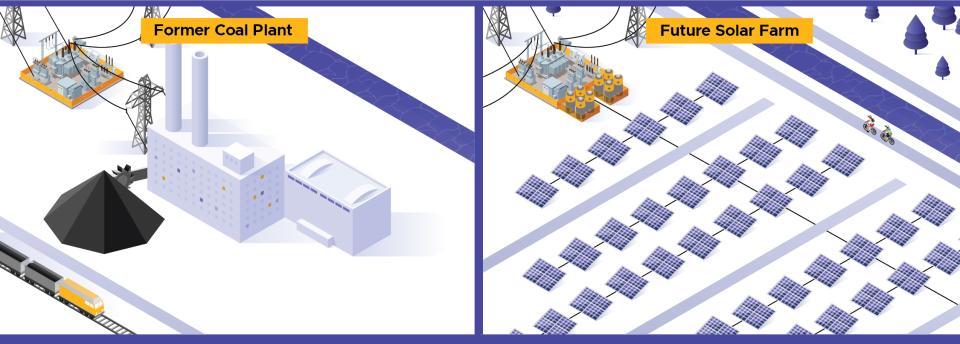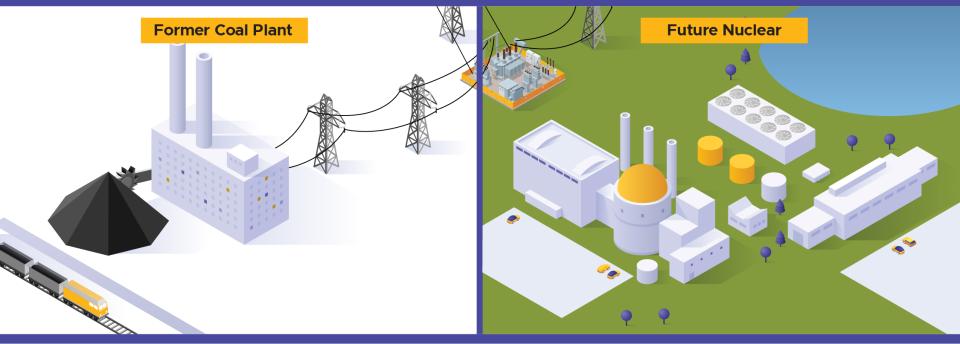Coal-to-X Fact Sheets
Retired and retiring coal power plants provide an opportunity for redevelopment to new energy infrastructure. Existing land and facilities at the power plant site can be repurposed, such as electricity infrastructure for connections to the grid as well as administrative buildings and parking lots. Combining site features with financial incentives available from federal or state and local authorities can make projects at these locations more cost-effective.
The coal-to-X fact sheets summarize key considerations for repurposing retired coal power plants to new uses. Relevant stakeholders including developers, communities, local governments, nonprofits, and utilities can use these fact sheets as informational resources.
Redeveloping Coal Power Plants: Data Centers
Retired and retiring coal power plants are an opportunity for connecting new, clean generation to the grid to meet the growing demand of data centers. Detailed information available in this fact sheet.

Redeveloping Coal Power Plants: Solar + Storage
Solar arrays can be developed on retired plant sites with favorable solar potential. Detailed information available in this fact sheet.

Redeveloping Coal Power Plants: Wind + Storage
The key considerations for coal-to-wind plus storage redevelopment include wind resource quality, financial support, point of interconnection, and the workforce. Detailed information is available in the fact sheet.

Redeveloping Coal Power Plants: Energy-Related Industrial Facilities (EV Manufacturing)
For EV manufacturing, existing land and facilities at the power plant site can be repurposed, such as electricity infrastructure for connections to the grid as well as administrative buildings and parking lots. Read the detailed fact sheet.

Redeveloping Coal Power Plants: Nuclear Power
Nuclear energy has the potential to provide numerous jobs and valuable dispatchable power but generally requires large sites with low surrounding population density.
